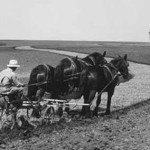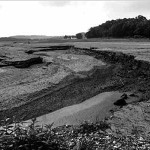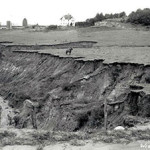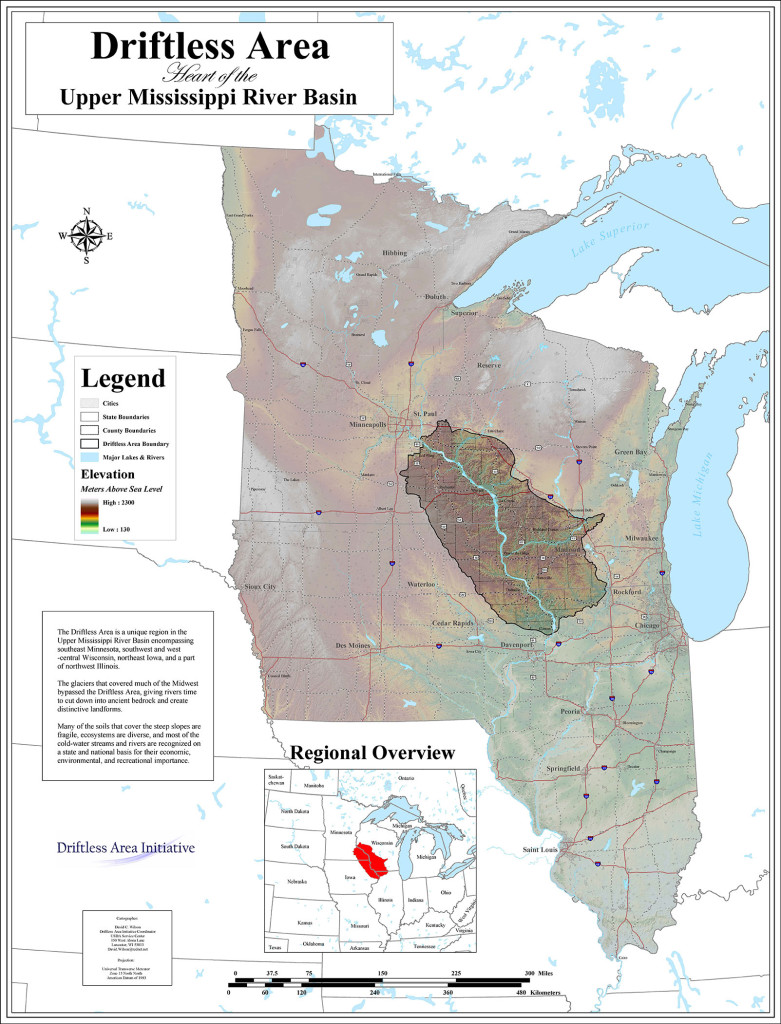The Trout Unlimited Driftless Area Restoration Effort (TUDARE)
Preserving at trout fishing Mecca.
The Driftless Area
The Midwest’s Driftless Area is a national treasure. Its distinctive topography, deep caves and springs and vast number of coldwater streams make the region unique. Bypassed by the last glacier, it has been described as, “a fragment of the past; a small piece of what once was.”
But the Driftless Area has often struggled with human-created challenges. Land use practices of the 1800s and early 1900s led to wide scale erosion, flooding and the altering of its streams and valleys. Early farming practices resulted in massive erosion, depositing dozens of feet of soil into many valleys—soil that continues its unalterable progress, moving tons of silt each year into the Mississippi River and beyond. Efforts to improve farming practices and restore the natural character of the Driftless Area by reducing erosion on the hillsides and hilltops began in the 1930s, coming into full force in the second half of the 20th century. Conservation organizations joining with local, state, and federal interests have worked together to slow the movement of soil into streams and re-establish trout fi sheries throughout the region, but on a somewhat limited basis.
The large size of the region and the varying abilities and interests of the numerous agencies and organizations working to restore it have resulted in inconsistent and often piecemeal conservation efforts. That, coupled with limited resources, has meant that the number of watersheds and streams that are functioning as they were meant to in the 24,000-square-mile region are few and far between. So too, changing agricultural practices potentially threaten to once again trigger increased erosion throughout the region.
Unlike many areas in the United States, where prime coldwater fisheries are threatened by more intractable problems such as rapidly diminishing water availability, urban growth, acid rain or mining runoff, the Driftless Area has a potentially bright future. There is general agreement regarding what needs to be done to restore the diversity, health and productivity of the region. No interest in the Driftless Area is served by erosion or degraded water quality. Agricultural producers, anglers, local communities, and others, stand to benefit from a full-scale restoration of the Driftless Area. Restoration of the Driftless Area can also serve as a model of collaborative stewardship and provide a nationally significant model of how individuals, conservation organizations, state and federal agencies, and others, can restore the health of the lands and waters that sustain us all.
Advance the Restoration and Protection of the Midwest’s Driftless Area.
The Driftless Area Restoration Effort (DARE), spearheaded by Trout Unlimited (TU), is an endeavor to advance restoration and protection of streams and watersheds in the Driftless Area located in the heart of the Upper Mississippi River basin. The primary aim of this plan is to articulate a regional strategy for linking upland conservation with stream corridor and headwaters restoration to improve upland health, water quality, and fish habitat and populations. To that end, with input from partner organizations, we have compiled a series of maps as well as goals and strategies to help us move forward purposefully. The maps display where collaborative showcase watershed efforts will be most successful in attaining these goals. TU and partner groups, principally the state Departments of Natural Resources, USDA Natural Resources Conservation Service, U.S. Fish and Wildlife Service, the Driftless Area Initiative, and county conservation agencies, are already working together in a handful of watersheds to implement showcase projects. Building on this foundation and using this plan as a guide we hope to catalyze additional and more comprehensive restoration efforts across the entire Driftless Area.
DARE is a result of the good work and commitment of Trout Unlimited volunteers. Trout Unlimited is a private, non-profit organization with more than 150,000 members nationwide dedicated to conserving, protecting and restoring North America’s trout and salmon fisheries and their watersheds. In recent years, over 15 chapters within and around the region have worked with agency partners to restore sections of approximately 60 streams. The success of these localized efforts demonstrates the tremendous potential for a largescale, regional restoration effort. The collaborative, science-based, and integrated approach of DARE builds upon a watershed restoration project sponsored by the national office of TU in the Kickapoo River watershed. The Kickapoo Project, located in the Driftless Area of Wisconsin, operated from 1996-1999 and was the second site in the nation for TU’s Home Rivers Initiative program. Home Rivers Initiatives are collaborative, science-based, multi-year watershed restoration efforts.
Located in the heart of the Upper Mississippi River basin, the 24,000 square-mile unglaciated “Driftless” region of northeast Iowa, southeast Minnesota, southwest Wisconsin, and northwest Illinois is one of America’s unique natural resource treasures. When glaciers retreat they leave behind deposits of dirt, gravel, and rock called drift. Since this area was not overrun by the most recent glaciation it is “drift-less.” The landscape is characterized by craggy limestone and sandstone valleys, steep hillsides and abundant coldwater springs. More than 600 spring creeks interlace the 24,000 square-mile landscape and drain into the Mississippi River. The streams support populations of native brook trout and wild brown trout.
“Throughout the Driftless Area, water quality has been degraded, stream temperatures have increased, stream habitat has been lost.”
In the early 1900s farming practices on the highly erosive soils resulted in devastating erosion. Hundreds of miles of once stable clean coldwater spring creeks were inundated with soils and fine sediments; in many areas 12-15 feet of soil accumulated in valley floors. Throughout the Driftless Area, water quality has been degraded, stream temperatures have increased, stream habitat has been lost, and the natural system’s hydrologic cycle has been altered, with flooding becoming more frequent and severe.
- Courtesy Wisconsin Historical Society
- Courtesy Wisconsin Historical Society
- Courtesy Wisconsin Historical Society
Changes in land use and conservation efforts began as early as the 1930s and have contributed to the recovery of much of the landscape. However, the legacy of the decades of massive erosion still continues today, with most streams marked by steep eroding banks and incised channels. Furthermore, evolving land ownership trends and agricultural practices continue to present new challenges for the sensitive landscape threatening to reverse decades of improvement.
The TUDARE Project Region
The Trout Unlimited Driftless Area Restoration Effort (TUDARE) is founded on the work of TU volunteers. There are more than 15 chapters within and around the region that have worked with agency partners to restore sections of approximately 60 streams in recent years. The rivers and fishery respond quickly and extraordinarily well to straightforward techniques to control erosion, reconnect the floodplain, and improve in-stream habitat. These efforts have only scratched the surface of the need and potential for the region, though, and demonstrated the potential positive impact from a regional restoration effort.
“Unlike many areas in the United States…the Driftless Area has a potentially bright future.”
Trout Unlimited is working to greatly increase the amount of watershed restoration activity in the Driftless and make it more effective by strategically linking restoration and protection efforts. The goals of TUDARE are to reduce soil erosion and pollution, benefit fish and their habitat, and expand recreational opportunities. TU also hopes to foster the development of a regional identity focused on the abundance of free-flowing coldwater streams, their contribution to region, and their reliance of good stewardship. TUDARE is helping TU advocate for strengthening national conservation programs such as the USDA Farm Bill Conservation programs and the National Fish Habitat Initiative.
A restored section of a Driftless streamTo accomplish this we are building alliances with other agencies and organizations in the region to marshal the necessary resources to develop and execute restoration projects. TU is also working with partners to prioritize all watersheds in the region based on the restoration potential and resource benefit, and develop a staged strategy for planning and implementation. We are working through our chapter network to build broad community support for immediate restoration work and long-term sustainable management, as well as to help the region capitalize on the economic opportunities that a restored landscape would offer.
Driftless Area TU Chapters
[ Iowa ]
Spring Creeks (Iowa City/Dubuque)
Iowa Driftless (Decorah)
[ Minnesota ]
Minnesota Council TU
Twin Cities (Minneapolis/St. Paul)
Hiawatha (Rochester)
Win Cres (Winona)
Wa-Hue (Red Wing)
Paul Bunyan (Bloomington)
Mid Minnesota (Sartell)
[ Wisconsin ]
Wisconsin Council TU
Southern Wisconsin (Madison)
Central Wisconsin (Winneconne)
Kiap-TU-Wish (Hudson)
Fox Valley (Appleton)
Harry & Laura Nohr (Montfort)
Coulee Region (LaCrosse)
Blackhawk (Edgerton)
Ocooch Creeks (Richland Center)
Wisconsin Clearwaters (Eau Claire)
DID YOU KNOW?
> The Driftless Area has the highest concentration of trout waters in the Midwest.
> Fishing in the Driftless Area (including parts of MN, IA, and IL) has an economic impact of more than $1.1 billion annually.
>Trout Unlimited (TU) chapters, local rod & gun clubs, the state DNRs, and other conservation groups have helped restore and manage over 450 miles of high quality trout and smallmouth bass streams in the area.
> The Stewardship program and other state, federal, local, and private funding sources have helped provide public angling access on over 500 miles of trout streams and 75 miles of smallmouth bass waters in Wisconsin’s portion of the Driftless Area.






